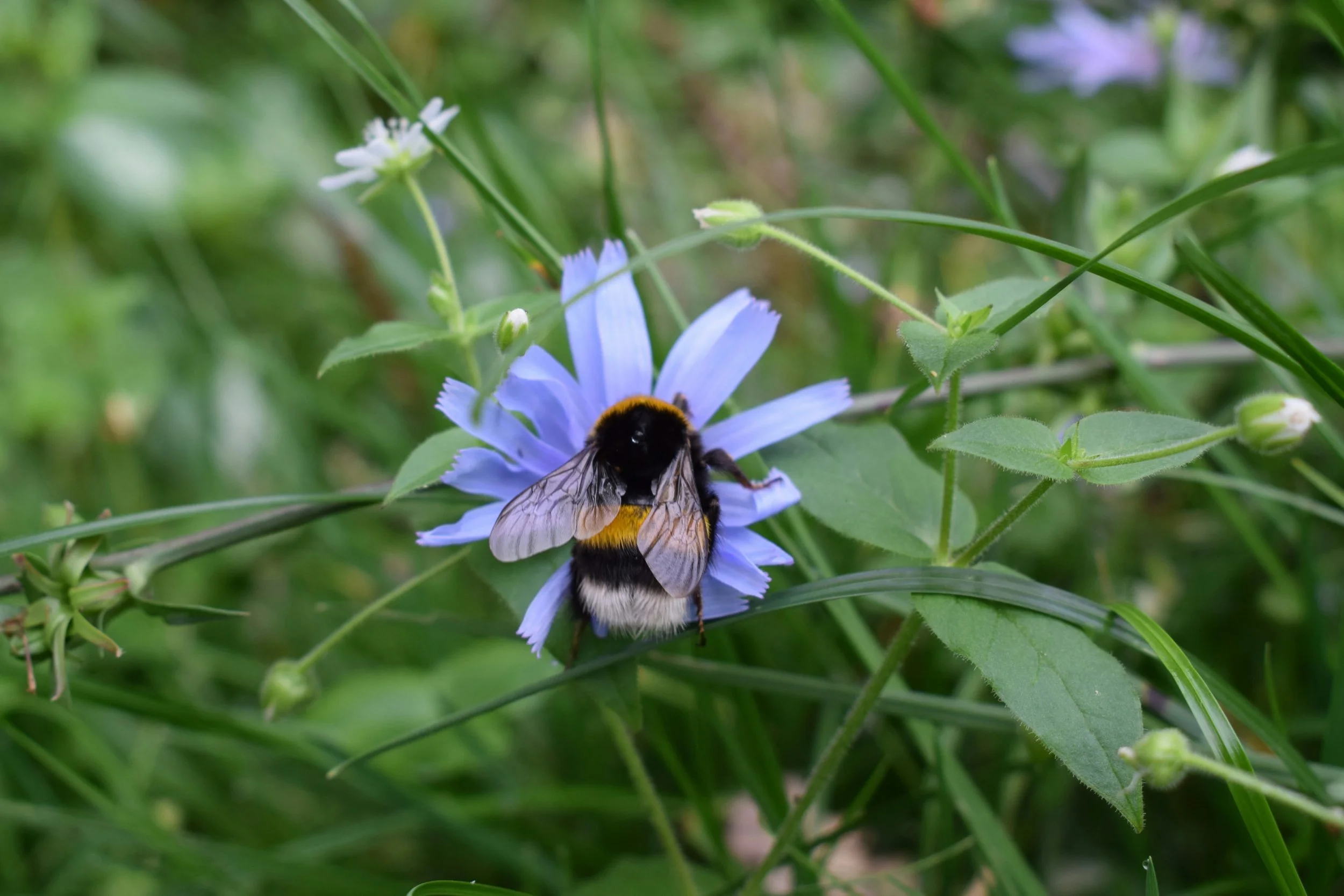Tall Grass Wild Heart - why let it grow?
Rewilding Andover Town
We’re on a mission to change minds about ‘Messy Green Spaces’
Walk through Andover in late spring or early summer, and you might notice something surprising: patches of tall, swaying grass where you'd once have expected the buzz of lawnmowers and manicured green.
For some, this change raises eyebrows…
“Why isn’t this grass cut?”
“Has the council forgotten it?”
“Isn’t this just scrubland?”
We understand the confusion and even the frustration. We’ve been conditioned to see short, tidy lawns as a symbol of care and order. But here at Andover Trees United, we want to challenge that narrative. Because uncut grass isn't a sign of neglect—it’s a deliberate, thoughtful act of environmental care.
Harmony Woods, Andover Hampshire
Photo by David J. Boozer on Unsplash.
What you CAN do!
Want to help nature thrive in Andover? Here’s how:
Support wild areas in public parks and green spaces. If you see signs explaining “Why We Let the Grass Grow,” share them with friends.
Let your lawn grow—even a small patch of wild can help insects and birds.
Volunteer with Andover Trees United to help manage and promote natural spaces.
Correct myths: If someone calls it messy, tell them it’s meaningful.
Nature Doesn’t Need to Be Neat
So the next time you walk past a patch of long grass—whether in the park, beside a footpath, or at the edge of a school field—pause and take it in.
You’re not looking at a neglected space.
You’re looking at life, possibility, and quiet hope.
Let it grow. Let it live.
What Lives in Long Grass?
To the untrained eye, tall grass might look empty. But look again—and look closer.
Hidden within is a world alive with activity:
Bumblebees buzz from clover to knapweed, collecting nectar.
Butterflies, like the Meadow Brown and Marbled White, flutter delicately through the stems.
Crickets and grasshoppers chirp from their hiding places, contributing to the summer soundscape.
Field mice and voles scurry unseen, providing food for local owls and kestrels.
Skylarks nest and sing, creating stunning sounds on a hot summer's day.
Wildflowers like oxeye daisy, birdsfoot trefoil, and yarrow bloom between the blades, painting a living canvas.
Each of these species—and the countless others they support—rely on long, unmanaged grass. Without it, their numbers drop. Their habitats vanish.
Field Vole - Scientific name: Microtus agrestis. Photo by Heather Wilde on Unsplash.
Small Wild Spaces = Big Environmental Impact
Nature doesn’t need to be a vast forest or national park to matter. Even a roadside verge, a school playing field margin, or a corner of a public park can become a pocket of biodiversity if we simply stop mowing.
Leaving grass uncut:
Reduces carbon emissions (less mowing = less fuel use)
Improves soil health and water retention
Supports pollinators, which are essential for food crops
Creates microclimates that protect life during extreme weather
Rebuilds ecosystems from the ground up
This isn’t laziness. It’s regeneration.
Tall grass looks messy?
A common concern is that tall grass looks “messy,” “uncared for,” or even unsafe. This is where communication and design come in. A few simple actions can transform perception:
Mown pathways through tall areas show they’re intentional and accessible.
Educational signage explains their purpose: “Wildlife Habitat – Please Enjoy From the Path.”
Seasonal management (such as autumn cuts) keeps them healthy while preventing overgrowth.
Think of it like letting your hair grow out—it still needs attention and care, but it doesn’t need to be buzzed short to be healthy or beautiful.
A Cultural Shift: From Lawn to Life
Across the UK, more and more towns are embracing the value of rewilding—allowing nature to reassert itself in urban spaces. Campaigns like #NoMowMay, Plantlife’s Road Verge Campaign, and the Let It Bloom movement have shown that people are ready to rethink what beauty and care look like in our public spaces.
At Andover Trees, we’re proud that Andover’s Harmony Woods is part of that movement. We see every patch of long grass not as a failure of maintenance, but as a statement of intent: we choose biodiversity, climate action, and community health.
White-tailed Bumblebee - Scientific name: Bombus lucorum. Photo by Kristina Kutleša on Unsplash.




